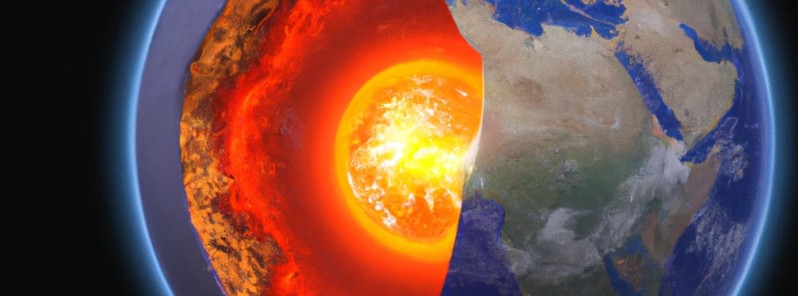According to a new study published in the journal Nature Geoscience, the inner core of the Earth may have stopped rotating faster than the rest of the planet around 2009 and then turned in an opposite direction.
- The data hint that the inner core might even be in the process of shifting back towards subrotation. If so, something is probably happening to the magnetic and gravitational forces that drive the inner core’s rotation. Such changes might link the inner core to broader geophysical phenomena such as increases or decreases in the length of a day on Earth.
The research, conducted by seismologists at Peking University in Beijing, analyzed seismic data from the early 1990s and found that all paths that previously showed significant temporal changes have exhibited little change over the past decade. This globally consistent pattern suggests that inner-core rotation has recently paused.
The study also found that this recent pattern is associated with a gradual turning-back of the inner core as a part of an approximately seven-decade oscillation, with another turning point in the early 1970s.
This multidecadal periodicity coincides with changes in several other geophysical observations, especially the length of day and magnetic field. These observations provide evidence for dynamic interactions between the Earth’s layers, from the deepest interior to the surface, potentially due to gravitational coupling and the exchange of angular momentum from the core and mantle to the surface.
This discovery could help to shed light on the many mysteries of the deep Earth, including what part the inner core plays in maintaining the planet’s magnetic field and in affecting the speed of the whole planet’s rotation — and thus the length of a day. However, the study’s findings are just the latest installment in a long-running effort to explain the inner core’s unusual rotation, and may not be the final word on the matter.
In 1936, researchers discovered the inner core after studying how seismic waves from earthquakes travel through the planet. Changes in the speed of the waves revealed that the planet’s core, which is about 7 000 kilometers (4 349 miles) wide, consists of a solid center, made mostly of iron, inside a shell of liquid iron and other elements. As iron from the outer core crystallizes on the surface of the inner core, it changes the density of the outer liquid, driving churning motions that maintain Earth’s magnetic field. The liquid outer core essentially decouples the 2 400-kilometer-wide (1 491 miles) inner core from the rest of the planet, allowing it to spin at its own pace.
In 1996, the lead authors of the current study reported studying earthquakes that originated in the same region over three decades, and whose energy was detected by the same monitoring station thousands of kilometers away. Since the 1960s, the scientists said, the travel time of seismic waves emanating from those earthquakes had changed, indicating that the inner core rotates faster than the planet’s mantle, the layer just beyond the outer core.
Further studies refined estimates of the rate of that ‘super-rotation’, concluding that the inner core rotates faster than the mantle by about one-tenth of a degree per year.
However, not all researchers agree with these findings and more research is needed to fully understand the inner core’s rotation and its effects on the planet.
1 Multidecadal variation of the Earth’s inner-core rotation – Yi Yang and Xiaodong Song – Nature Geoscience – January 23, 2023 – DOI: https://doi.org/10.1038/d41586-023-00167-1
2 Has Earth’s inner core stopped its strange spin? – Nature – January 23, 2023




